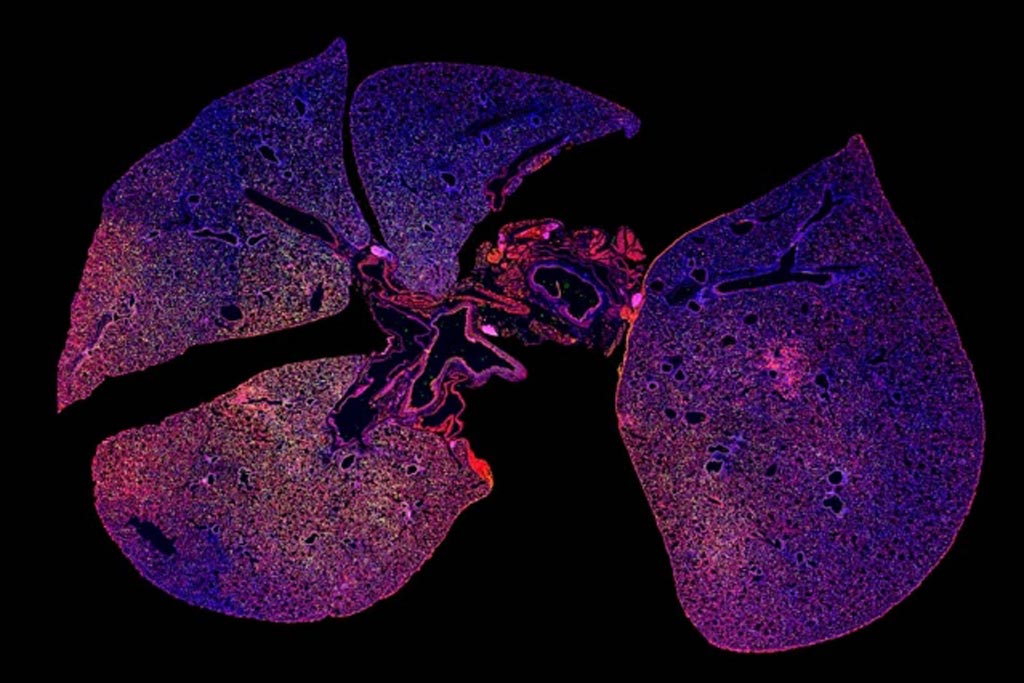Nanoparticle Assay Detects Respiratory Bacteria in Pneumonia Model
By LabMedica International staff writers
Posted on 13 Dec 2018
Researchers used a mouse pneumonia model to demonstrate how a nanoparticle-based technique could be used to detect Pseudomonas aeruginosa bacteria in infected animals and monitor bacterial clearance from their lungs during the course of antibiotic treatment.Posted on 13 Dec 2018
Respiratory tract infections represent a significant public health risk, and timely and accurate detection of bacterial infections facilitates rapid therapeutic intervention. Furthermore, monitoring the progression of infections after intervention enables alternative therapy in cases where initial treatments were ineffective, avoiding unnecessary drug dosing that could contribute to antibiotic resistance. However, current diagnostic and monitoring techniques rely on non-specific or slow methods, such as radiographic imaging and sputum cultures, which fail to specifically identify bacterial infections and take several days to identify optimal antibiotic treatments.

Image: A strong immune response can be seen in this immunofluorescence image of lung tissue infected with pneumonia where immune cells are stained green and red (Photo courtesy of Colin Buss, Massachusetts Institute of Technology).
To improve the diagnostic situation, investigators at the Massachusetts Institute of Technology (Cambridge, USA) modified a "nanoparticle sensor" assay that they had developed previously to detect tumors. This technique utilized nanoparticles coated with peptides that could be digested by certain proteases (such as those expressed by cancer cells). Following injection, the particles accumulated in tumors, where the proteases cleaved the peptides from the surface of the nanoparticles. The peptides were eliminated as waste and were detected by a simple urine test.
In the current study, one protease sensor comprised a peptide substrate for the P. aeruginosa protease LasA. A second sensor was based on elastase protein and detected the recombinant enzyme neutrophil elastase as well as secreted proteases from bacterial strains.
The investigators reported in the November 29, 2018, online edition of the journal EBioMedicine that nanoparticle formulations of these protease sensors (termed activity-based nanosensors or ABNs) detected P. aeruginosa in infected mice and monitored bacterial clearance from the lungs over time. Additionally, ABNs differentiated between appropriate and ineffective antibiotic treatments acutely, within hours after the initiation of therapy.
“If the patient’s symptoms go away, then you assume the drug is working. But if the patient’s symptoms do not go away, then you would want to see if the bacteria are still growing. We were trying to address that issue,” said senior author Dr. Sangeeta Bhatia, professor of health sciences and technology, electrical engineering, and computer science at the Massachusetts Institute of Technology. “We have been working on this idea that measuring enzyme activity could be a new way to peer inside the body. The sensors can help you distinguish between whether there is an infection and inflammation, versus inflammation and no infection. What we showed in the paper is that when you treat with the right antibiotic, the infection goes down but the inflammation persists.”
Related Links:
Massachusetts Institute of Technology














